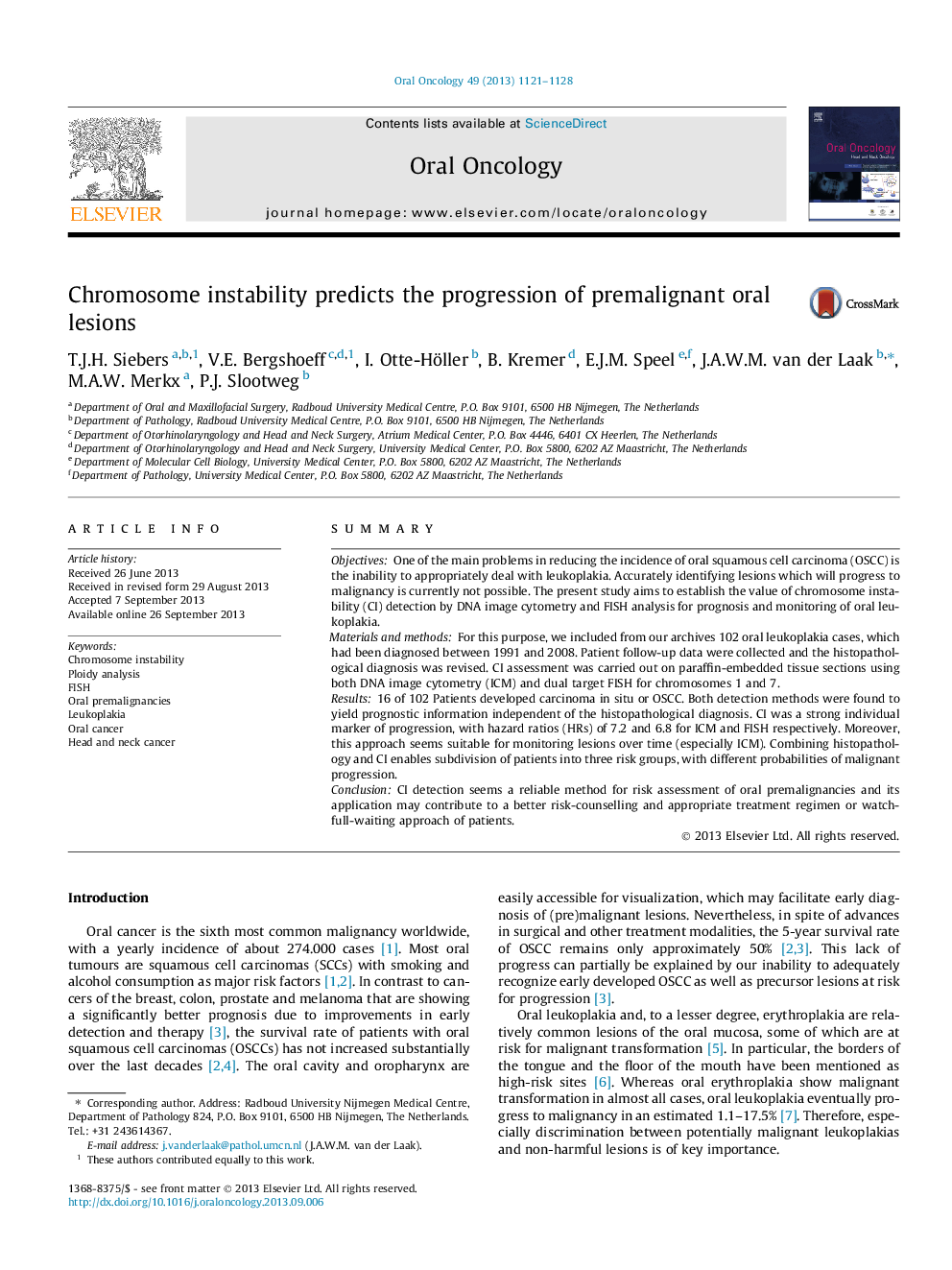| Article ID | Journal | Published Year | Pages | File Type |
|---|---|---|---|---|
| 6055013 | Oral Oncology | 2013 | 8 Pages |
SummaryObjectivesOne of the main problems in reducing the incidence of oral squamous cell carcinoma (OSCC) is the inability to appropriately deal with leukoplakia. Accurately identifying lesions which will progress to malignancy is currently not possible. The present study aims to establish the value of chromosome instability (CI) detection by DNA image cytometry and FISH analysis for prognosis and monitoring of oral leukoplakia.Materials and methodsFor this purpose, we included from our archives 102 oral leukoplakia cases, which had been diagnosed between 1991 and 2008. Patient follow-up data were collected and the histopathological diagnosis was revised. CI assessment was carried out on paraffin-embedded tissue sections using both DNA image cytometry (ICM) and dual target FISH for chromosomes 1 and 7.Results16 of 102 Patients developed carcinoma in situ or OSCC. Both detection methods were found to yield prognostic information independent of the histopathological diagnosis. CI was a strong individual marker of progression, with hazard ratios (HRs) of 7.2 and 6.8 for ICM and FISH respectively. Moreover, this approach seems suitable for monitoring lesions over time (especially ICM). Combining histopathology and CI enables subdivision of patients into three risk groups, with different probabilities of malignant progression.ConclusionCI detection seems a reliable method for risk assessment of oral premalignancies and its application may contribute to a better risk-counselling and appropriate treatment regimen or watchfull-waiting approach of patients.
